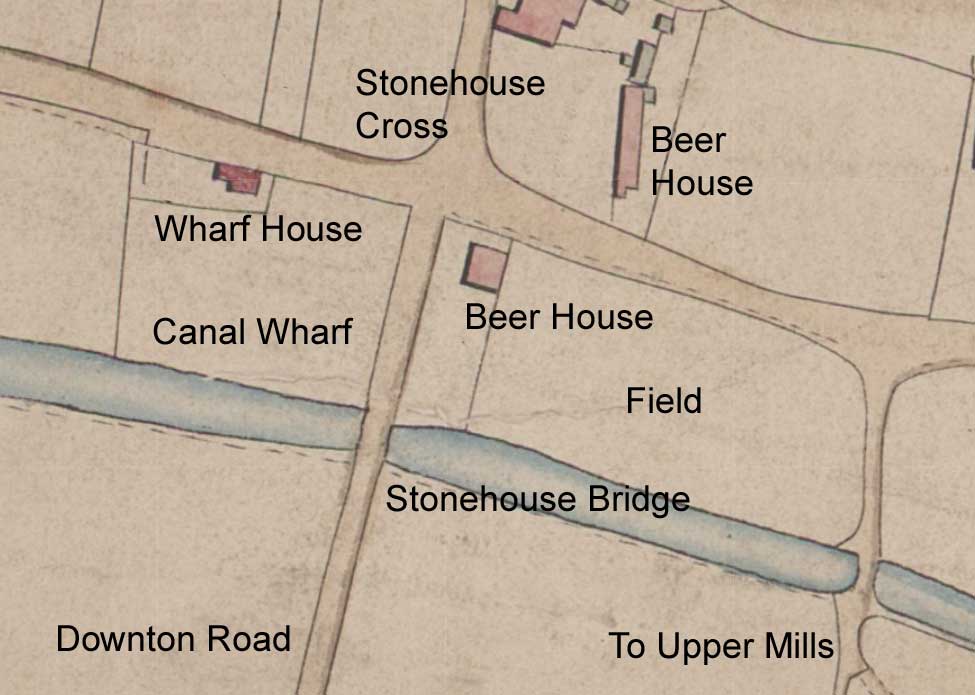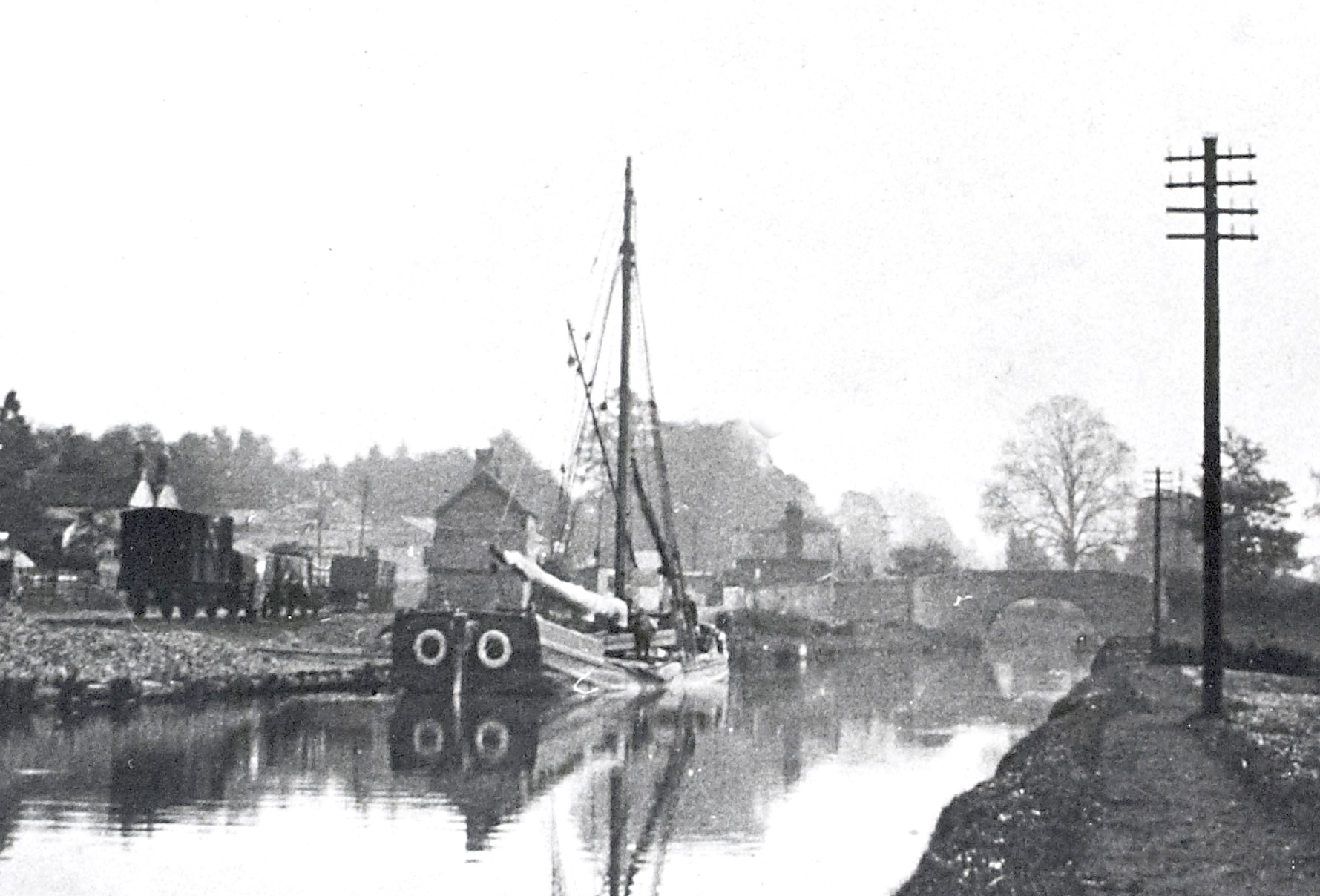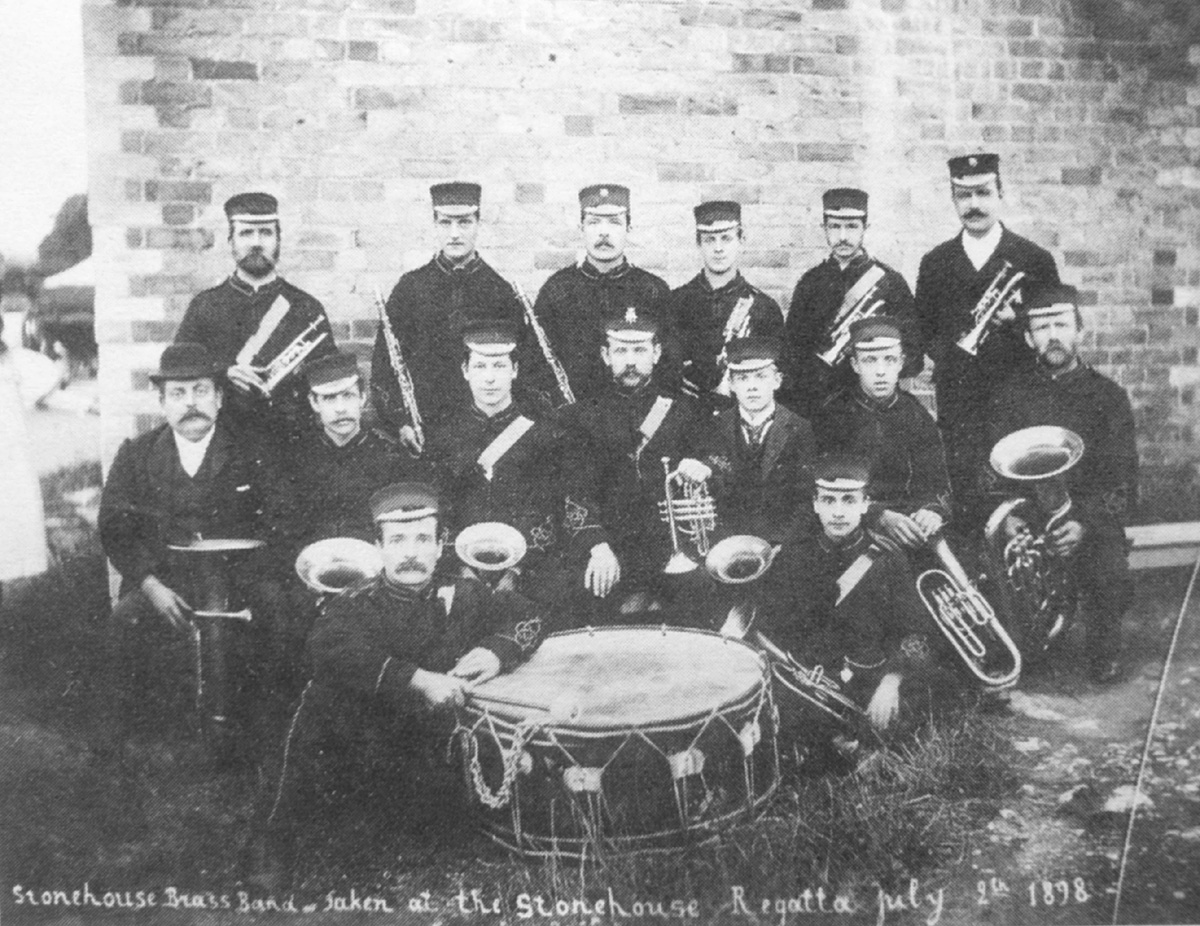The main wharf serving Stonehouse was close to Stonehouse Bridge, and it later had a railway connection.


The original wharf was a compact area between the canal and the main road with a house for the wharfinger who also traded as a coal merchant on his own account. The location was referred to in early canal records as Stonehouse Cross as it was close to an important cross roads where the beer house later known as the Ship Inn was built on the opposite corner.
As a public wharf, it could be used by any trader who paid the fees for temporary storage and for use of scales for weighing deliveries of coal. The wharfinger allocated space as needed and collected any fees. When one wharfinger was forced to sell up in 1859, his effects included a wooden office, an office desk, two sets of scales, several 56 pound weights, an iron roller for planks and a package truck.
In the Victorian era, the wharf was also used occasionally for Sunday School outings for children and parents packed into a working barge. Some went as far as Sharpness to see the huge ships and visit the pleasure grounds, while others went to the Bristol Road Wharf to visit neaby Netherhills Farm.


When the Stonehouse & Nailsworth Railway was built in the 1860s, it cut through between the Wharf House and the canal-side wharf, and the railway company provided additional land to the west and built a lie-bye where barges could unload without obstructing passing traffic.
The railway company also provided a siding on the wharf, access to which required two sets of level-crossing gates to be closed, one being very close to the important cross-roads. Road traffic was particularly effected if any wagons had to be shunted into or out of the siding on the wharf.
When the railway opened in 1867, and it had an immediate effect on canal traffic as it served much the same area as the canal did. The Stroudwater Company tried to compete by lowering tolls, but the weight of goods carried on the canal reduced by 17 percent and never recovered. After the line closed in the 1960s, much of it was converted into a cycle track.


In the 1890s, the landlord of the Ship Inn organised a series of aquatic events for the public at Stonehouse Wharf with musical support from the Stonehouse Brass Band. The events featured sculling, canoe and swimming races for valuable prizes donated by sponsors.
Other activities included a water polo match, a duck hunt and a climbing the greasy pole competition. Swings and shooting galleries were also available, and one year a large number of 'Bovril' bombs were discharged. When fired, these distributed many small paper discs far and wide, one of which entitled the finder to 10 shillings worth of Bovril. For more about Stonehouse Regatta, visit Stonehouse Regatta.
For information about who traded from Stonehouse Wharf, search this website for 'Stonehouse Wharf'.
Sunday School trips from British Newspapers Archive online.
For more about the Stonehouse & Nailsworth Railway, see 'The Nailsworth & Stroud Branch' by Colin C Maggs.
The effect of the railway on canal traffic was extracted from D1180/4/30 & 31.